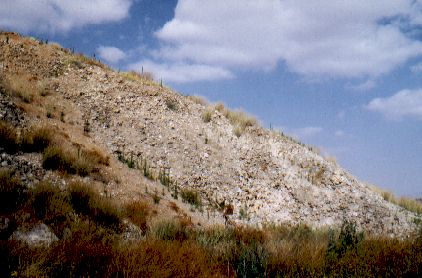
Assyrian Siege Ramp at Lachish

What a rocky hill! This hill is actually a siege ramp built by the Assyrian army during Sennacherib's invasion of Judah in 701 BC. After King Hezekiah refused to pay taxes to Sennacherib, Assyria decided to come force the collection of taxes. Lachish was an important Judean garrison that fell in that campaign. For more information on Sennacherib's attack on Jerusalem, visit Hezekiah's (Broad) Wall.
The Assyrian ramp goes from the base of the tell (artificial city hill) to the city walls. The residents of Lachish tried to build a counter ramp in the city, but the city still fell. Lachish again fell to the Babylonians in 586 BC. We have letters from that campaign between two commanders of Judah's armies who despair over no longer seeing the city lights from other Judahite forts that fell to the Babylonian army.
So why build a ramp to the top of a city wall instead of breaking through the gate? For that information, visit The Gates of Megiddo. For now, trust me that it was easier to spend a lot of energy building a ramp over the walls of the city. And ramps did take a long time to build, and during that time the builders were under fire from the inhabitants of the city. Sieges were difficult matters. You had to get through a well fortified gate or break through thick walls. To get to the walls, you had to climb a steep hill that was often surrounded by glacee (a slick covering). Sieges took years. It was often a waiting game, in which the city's citizens surrendered or were dehydrated and starved to the point of cannibalism.
- For more on tells, visit the Archaeological Methods Tour:
- Tell Jericho
Go Back to the Tour Table of Contents


